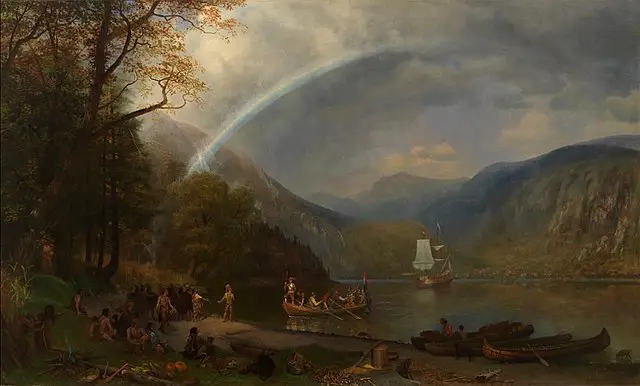Hudson River
The Hudson River has played an essential role throughout American history. It was originally named after Henry Hudson, the explorer that was trying to find a passage to Asia in 1609.
The first European to discover the river was Giovanni da Verrazano, an Italian explorer who found that it was an estuary. The Iroquois Native Indian tribe called the river Muh-he-kun-ne-tuk, which was also spoken as Great Mohegan and when translated, means “the water that moves both ways.”
Almost all of the Hudson River is in the state of New York, although one smaller area does flow in the boundary between New Jersey and New York. It is 315 miles long, and it’s called a “tidal estuary.”
This is a segment of the sea that comes inland and where saltwater and freshwater meet. It has two low tides and two high tides every day, and this causes the water levels to rise and fall as well as changes in the direction of the water flow.
Tidal motion causes the Hudson River to be salty at the end of the summer up to Newburgh.
Colonists that arrived in the 1600s to the area, then known as New Amsterdam, were under the control of the British Empire. The Hudson was used for extensive travel throughout the colonization of the states.
Although smaller than some of the other American rivers, the Hudson was important as a route for travel and for trade. The Hudson River valley is close to New York communities, and it was used during the 1750s in the Revolutionary War. The northern portion of the Hudson Valley was used by the British to defend against the invasion of the French.

As the Revolutionary War became inevitable, colonists wanted to fortify the Hudson River in 1775 to protect it for transporting supplies and troops. Other important factors included protecting the Fishkill, Plum Point, Verplanck, and Haverstraw ferry crossings that were the main connection for New England to the colonies in the mid-Atlantic. Without the Hudson River and the crossings, the colonists wouldn’t have been able to have American forces.
Hudson Bay is considered to be the second-largest in the world, with the Bay of Bengal in Asia as the largest. During colonial times, there were only a few trading posts along the river which supported the fur trade.
The Hudson Bay was historically the home of oysters and blue crab. Blue crab is caught between June and October, and this is due to the northward movement of the salt line, which brings both of these sea creatures more inland north.
The crabs then move upriver to feed. At one time, the Hudson also had a lot of oysters until overfishing caused them to almost disappear. Oysters help to keep the water clean, and when they were gone, the quality of water becomes worse. There is now evidence that the oysters are returning.
Q&A:
When translated, what was the Iroquois name for the Hudson River?
the water that moves both ways
What is a tidal estuary?
a segment of the sea that comes inland and where saltwater and freshwater meet
Why does the Hudson River flow south and north?
It has two low tides and two high tides every day, and this causes the water levels to rise and fall as well as changes in the direction of the water flow
What is the length of the Hudson River?
315 miles
What sea creature can be fished in the Hudson from June-October?
blue crab
Why was the Hudson River important during colonial times?
Without the Hudson River and the crossings, the colonists wouldn’t have been able to have American forces



